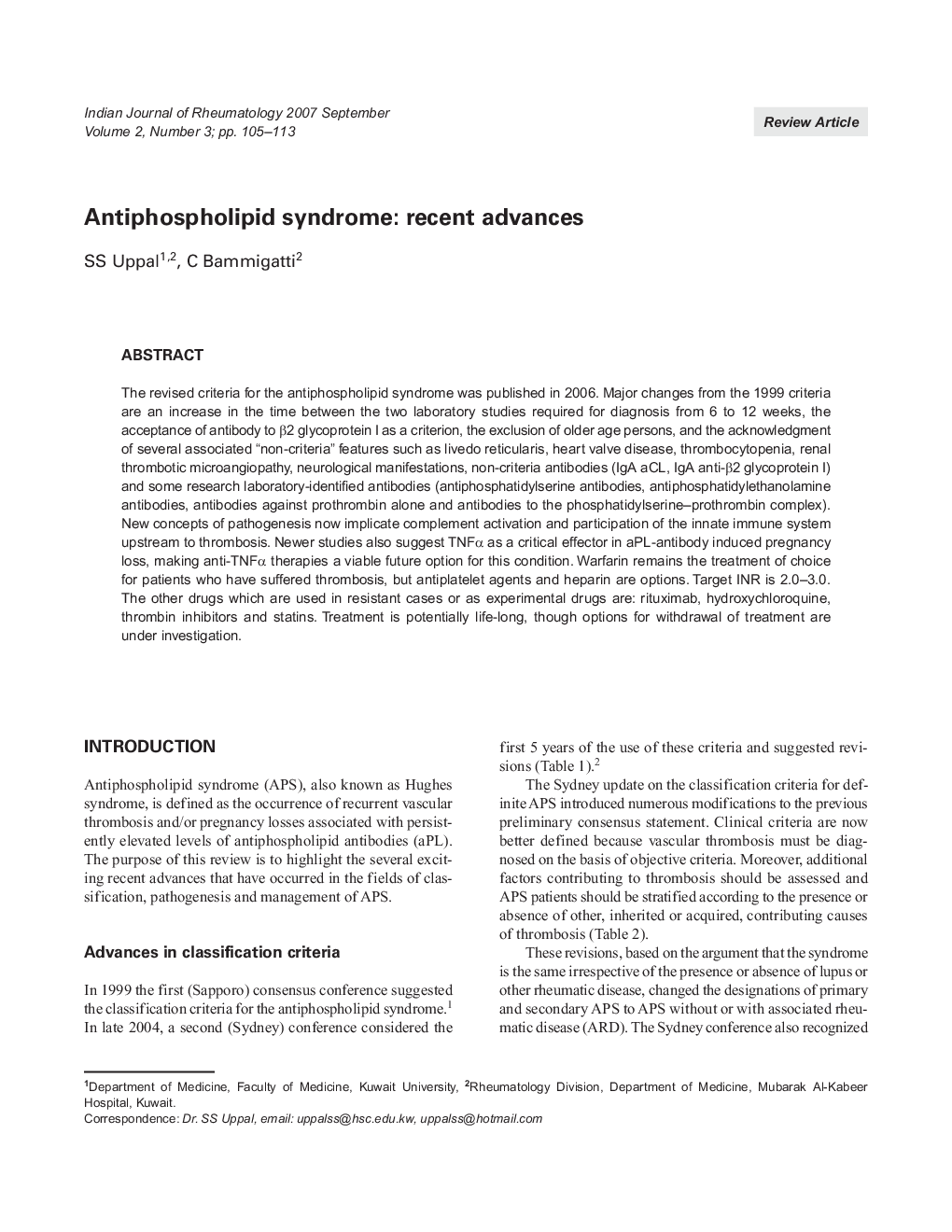| Article ID | Journal | Published Year | Pages | File Type |
|---|---|---|---|---|
| 3357995 | Indian Journal of Rheumatology | 2007 | 9 Pages |
The revised criteria for the antiphospholipid syndrome was published in 2006. Major changes from the 1999 criteria are an increase in the time between the two laboratory studies required for diagnosis from 6 to 12 weeks, the acceptance of antibody to β2 glycoprotein I as a criterion, the exclusion of older age persons, and the acknowledgment of several associated “non-criteria” features such as livedo reticularis, heart valve disease, thrombocytopenia, renal thrombotic microangiopathy, neurological manifestations, non-criteria antibodies (IgA aCL, IgA anti-β2 glycoprotein I) and some research laboratory-identified antibodies (antiphosphatidylserine antibodies, antiphosphatidylethanolamine antibodies, antibodies against prothrombin alone and antibodies to the phosphatidylserine–prothrombin complex). New concepts of pathogenesis now implicate complement activation and participation of the innate immune system upstream to thrombosis. Newer studies also suggest TNFα as a critical effector in aPL-antibody induced pregnancy loss, making anti-TNFα therapies a viable future option for this condition. Warfarin remains the treatment of choice for patients who have suffered thrombosis, but antiplatelet agents and heparin are options. Target INR is 2.0–3.0. The other drugs which are used in resistant cases or as experimental drugs are: rituximab, hydroxychloroquine, thrombin inhibitors and statins. Treatment is potentially life-long, though options for withdrawal of treatment are under investigation.
